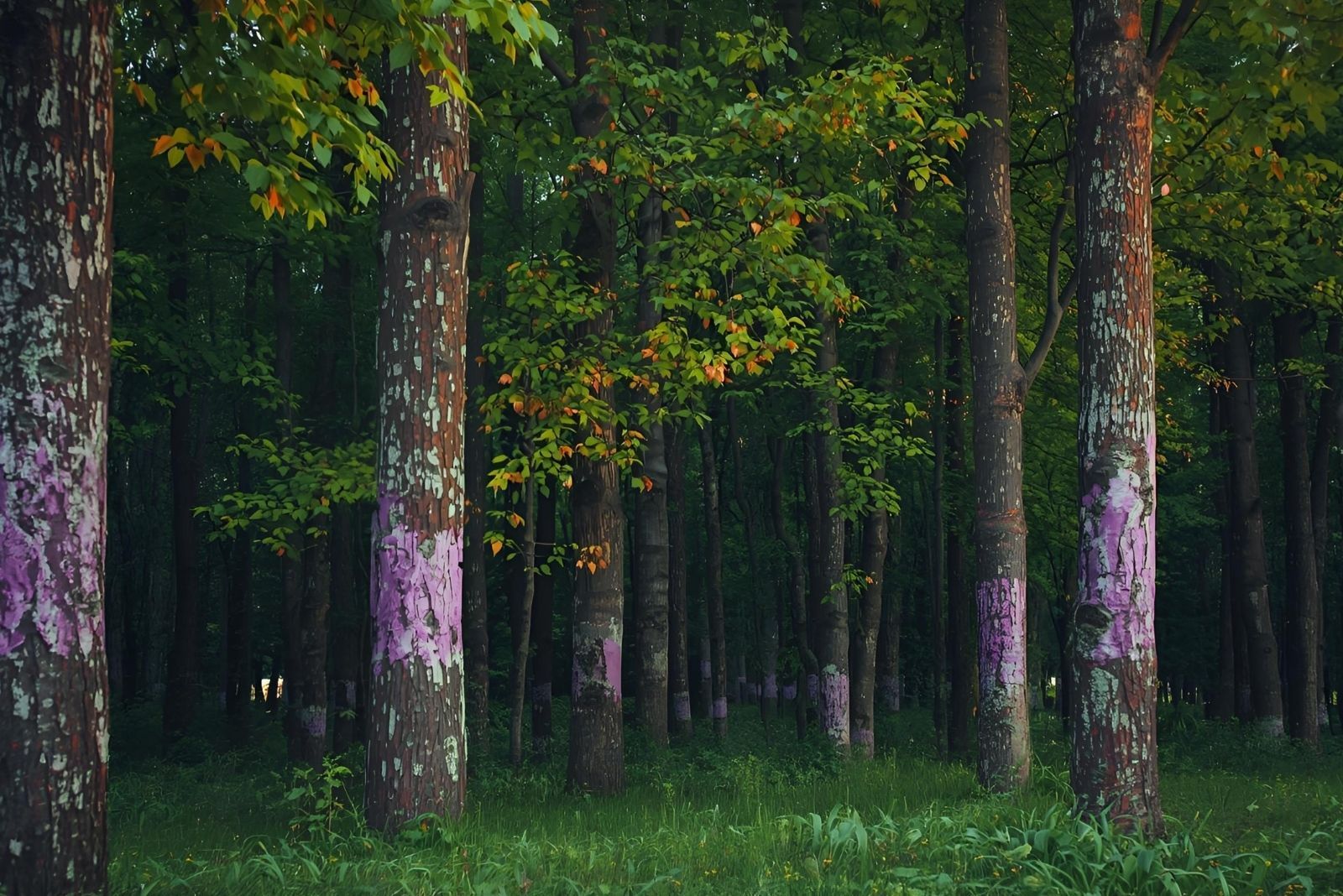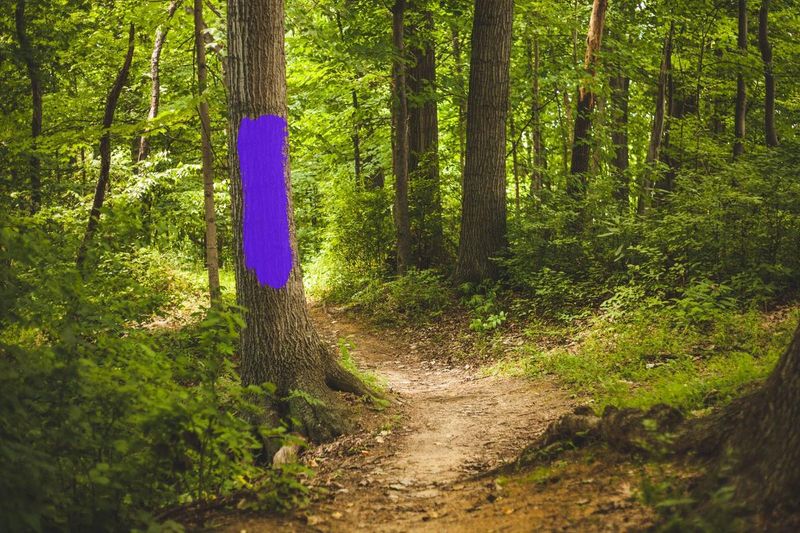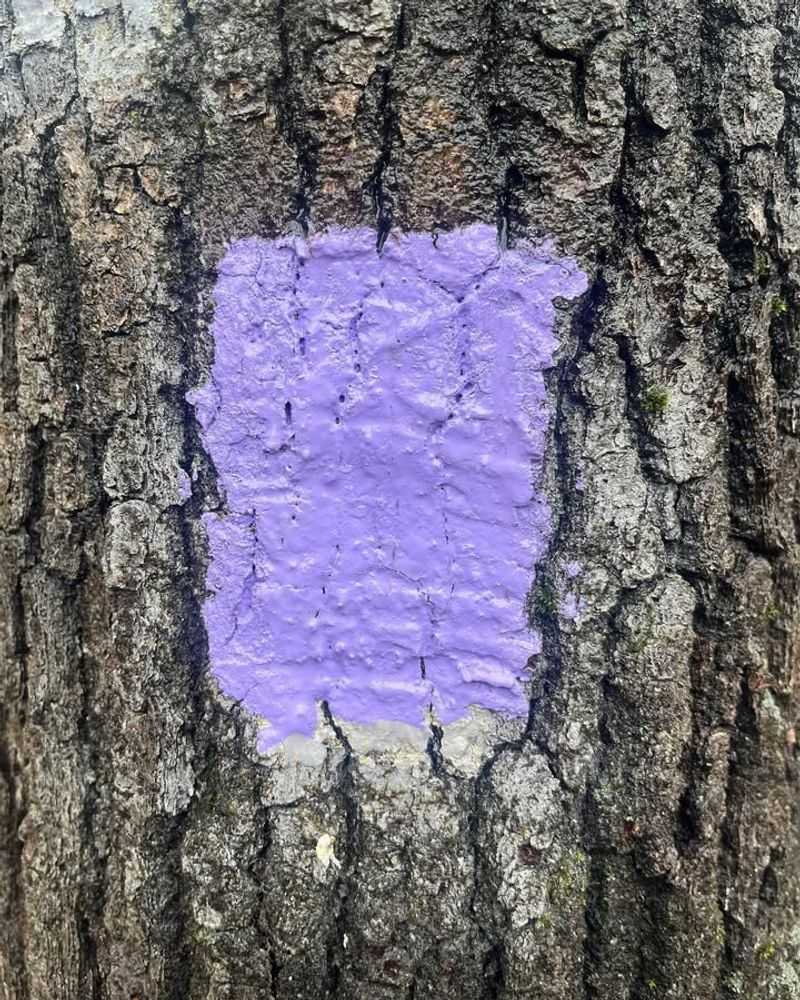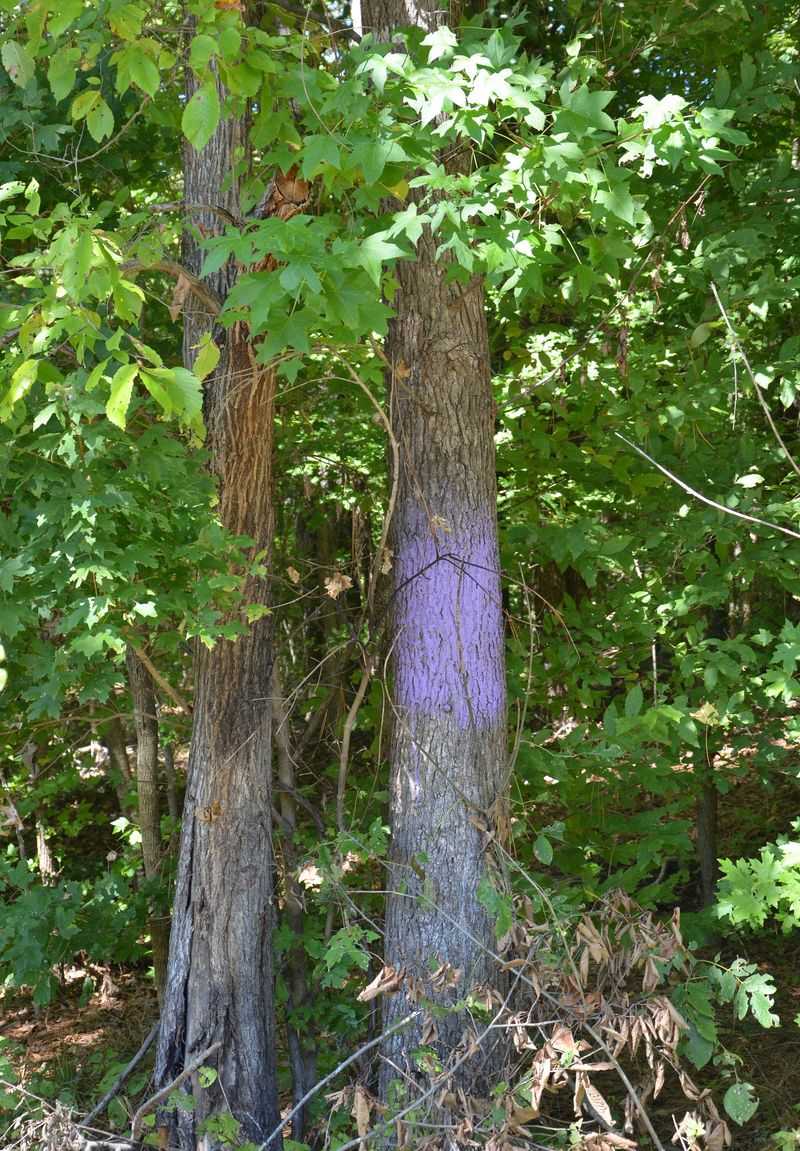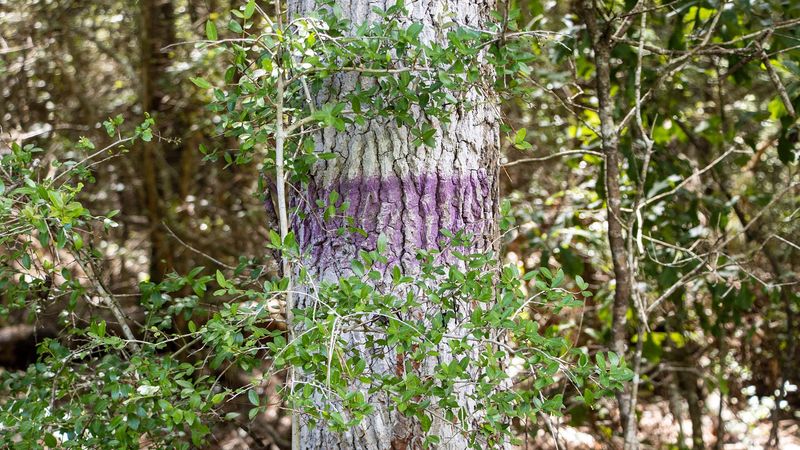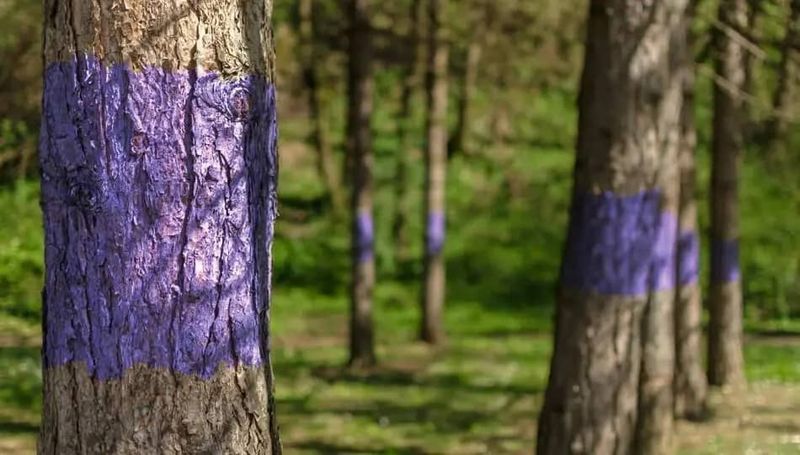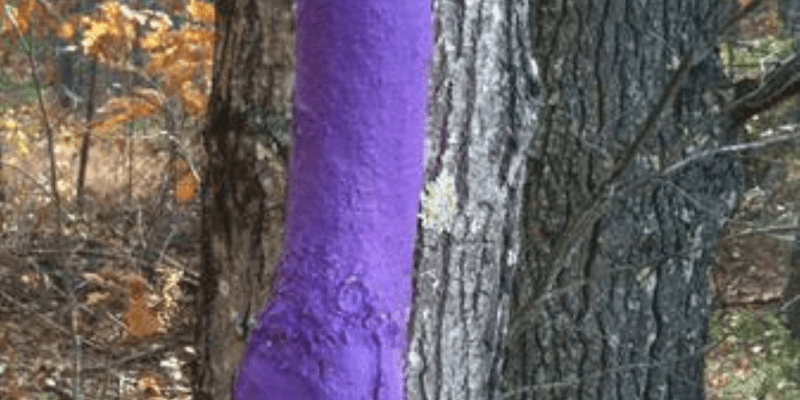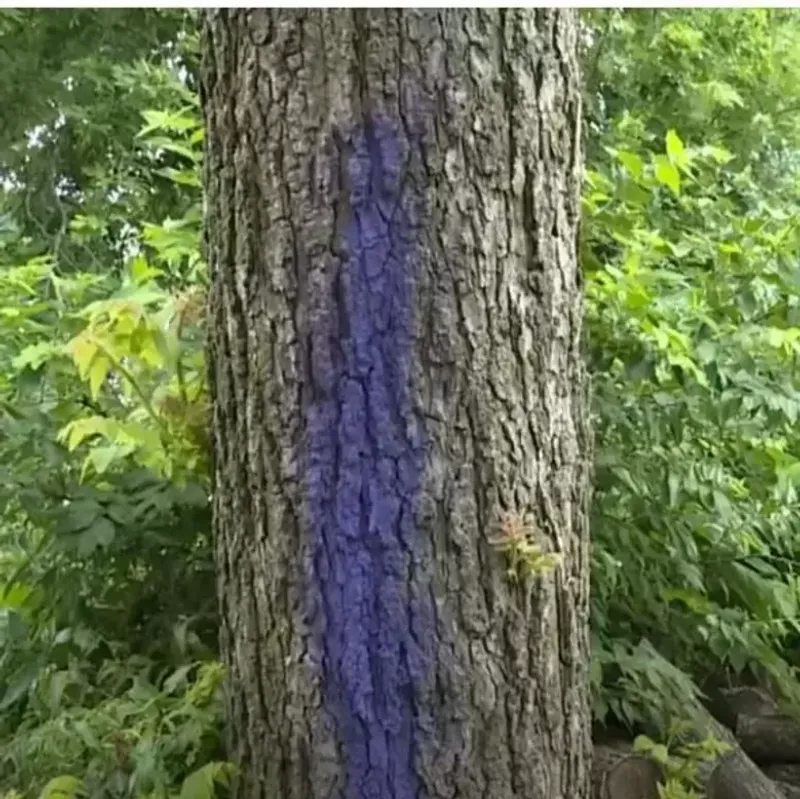Ever spotted bright purple markings on trees while hiking through Oregon forests? They might look like graffiti at first—but they’re not just random splashes of paint.
That vivid color is actually a legal warning. In many states, including Oregon, purple paint signals private property and means “no trespassing.” I’ve learned it’s smart to pause and take note when you see it.
Understanding these signs can help you stay safe, respectful, and out of trouble while exploring the outdoors.
1. Legal Property Boundary Marker
Property owners use purple paint instead of posting dozens of signs around their land. A single stripe of purple tells hikers and hunters they’re approaching private property without cluttering the forest with metal signs.
Oregon law recognizes this color-coding system as official notice. Landowners save money on signs while still protecting their rights. The paint lasts years through rain and snow, making it more reliable than paper notices.
2. No Trespassing Warning System
When you spot purple paint on a tree, it legally means the same thing as a no trespassing sign. Crossing that purple line without permission could result in fines or legal consequences.
The purple warning system started gaining popularity because signs get stolen or damaged by weather. Paint stays visible and clear for much longer. Outdoor enthusiasts must respect these boundaries just like they would any posted sign or fence.
3. Protection Against Vandalism And Theft
Metal signs are expensive and often get ripped down by troublemakers or stolen as souvenirs. Purple paint can’t be removed easily and costs just a few dollars per tree.
Landowners appreciate how paint withstands harsh Oregon weather better than paper or plastic signs. Rain, wind, and snow destroy traditional postings within months. A simple coat of purple paint protects property rights for years without constant replacement, saving both money and effort.
4. Easier Maintenance For Large Properties
Imagine owning hundreds of acres of forestland and needing to post signs every fifty feet. That would require thousands of signs and endless maintenance work!
Purple paint simplifies everything dramatically. Landowners can mark boundary trees quickly with a paintbrush or spray can. The system works perfectly for ranches, timber companies, and families with large rural properties. Repainting every few years beats replacing damaged signs constantly.
5. Universal Recognition Among Outdoor Enthusiasts
Hunters, hikers, and campers across multiple states now recognize purple paint as a universal boundary marker. This standardized system reduces confusion about where public land ends and private property begins.
Educational programs teach outdoor safety classes about purple paint laws. Once people learn the meaning, they can travel confidently through any state using this system. The consistency helps prevent accidental trespassing and keeps relationships positive between landowners and nature lovers.
6. Wildlife And Timber Management Zones
Some forestry operations use purple markers to designate special management areas where logging or hunting restrictions apply. These zones might protect endangered species or young tree growth.
Conservation groups also adopt the purple paint system for marking sensitive habitats. The color helps workers and visitors identify protected areas without disturbing wildlife with excessive signage.
Forest managers appreciate how the discreet markings blend better with natural surroundings than bright orange or yellow warnings.
7. Cost-Effective Alternative To Fencing
Building fences around massive forest properties would cost tens of thousands of dollars and harm wildlife migration routes. Purple paint achieves the same legal protection without physical barriers.
Animals can move freely while property boundaries stay clearly marked for humans. A gallon of purple paint costs around twenty dollars and marks hundreds of trees. Compare that to fence materials and labor! Rural landowners choose this practical solution that respects both their budget and the environment.

